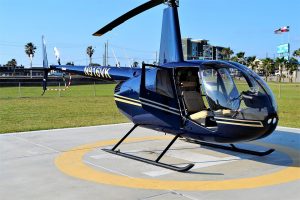 The U.S. Federal Aviation Administration (FAA) has issued new regulations for passenger restraints in open-door, “doors-off” helicopter flights.
The U.S. Federal Aviation Administration (FAA) has issued new regulations for passenger restraints in open-door, “doors-off” helicopter flights.
Hundreds of companies throughout the United States offer helicopter tours of local cities and attractions. It provides tourists and travelers with a bird’s-eye perspective of the landscape that’s simply not achievable from the ground. Many of these helicopters, however, perform flights with their doors open, which could increase the risk of injury for passengers.
On Marsh 11, an Airbus AS350b2 helicopter crashed in New York City’s East River, resulting in the deaths of five passengers. This prompted the FAA to create new regulations for open-door helicopter restraints. So, how will the new regulations affect helicopter pilots and charter companies?
One of the biggest changes with the FAA’s new regulation is the prohibition of supplemental restraints in doors-off helicopter flights. While the FAA isn’t banning doors-off helicopter flights, the new regulations require passengers in these flights to use FAA-approved restraints instead of supplemental restraints. Flight charter companies that fail to comply with these new regulations are subject to fines and other penalties handed down by the FAA.
The FAA also says that passenger restraints for doors-off helicopter flights must not require the use of a knife or tool to disengage. When a passenger is restrained, he or she should be able to easily disengage the restraint as explained by the pilot or charter company during the pre-flight briefing.
In its regulation, the FAA says that “any supplemental passenger restraint system being used for a doors-off flight must not require the use of a knife to cut the restraint, the use of any other additional tool or the assistance of any other person. A supplemental passenger restraint also must not require passenger training beyond what would be provided in a pre-flight briefing.”
According to the regulation, helicopter passengers can still wear quick-release restraints, but only if they don’t require any training beyond what’s provided to passengers during the pre-flight briefing.
The FAA has worked vigorously in recent years to improve the safety of helicopter flights. According to the FAA’s official website, the rate of injury among helicopter pilots and passengers dropped from 3.67 accidents per 100,000 flight hours in 2015 to 3.19 accidents per 100,000 flight hours in 2016, signaling a positive trend towards safer helicopter flights. The FAA further says that there were 106 helicopter accidents last year, about 12% fewer than in 2015. With these new regulations, helicopter flights will likely become even safer.



